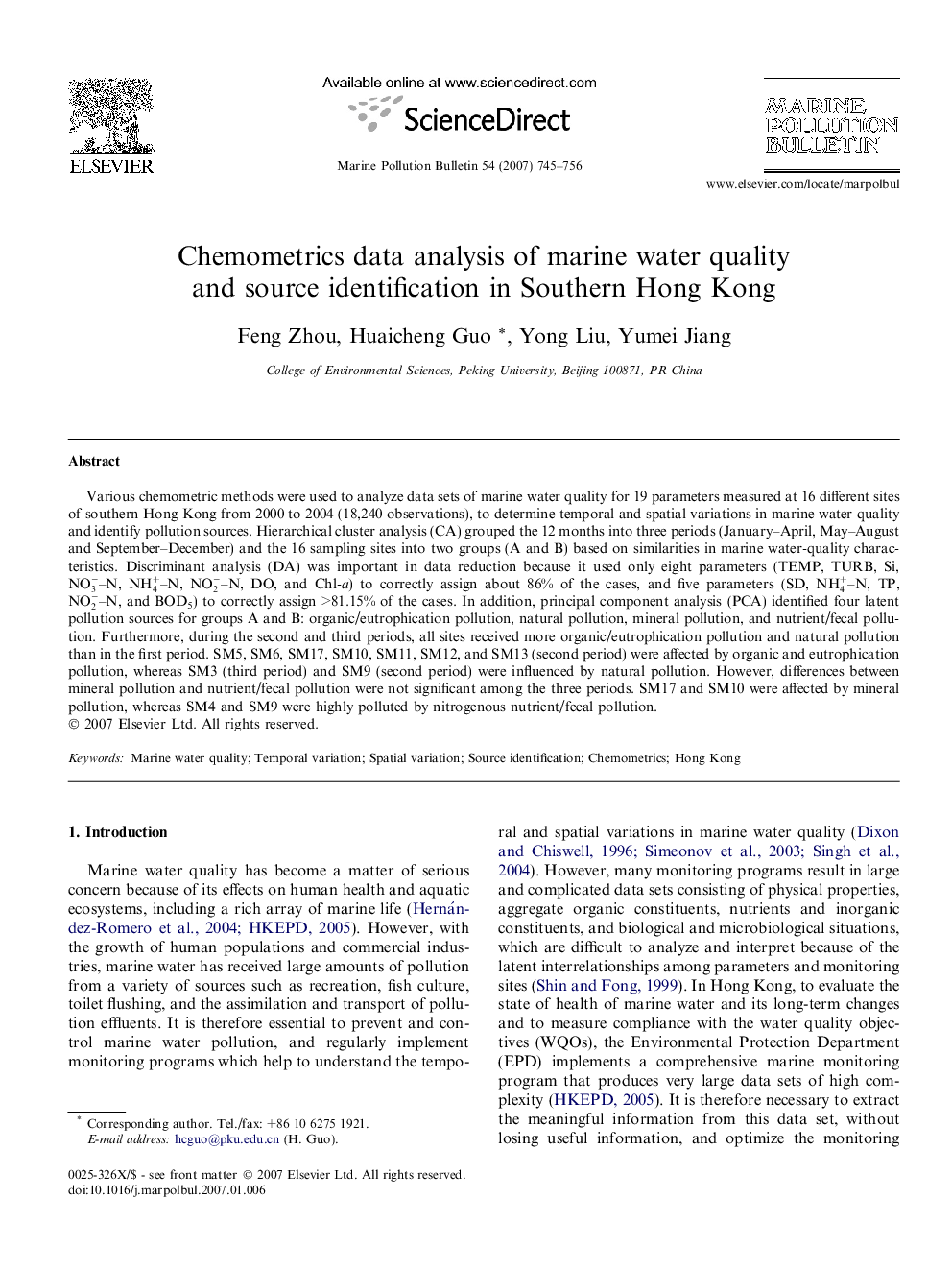| Article ID | Journal | Published Year | Pages | File Type |
|---|---|---|---|---|
| 4477686 | Marine Pollution Bulletin | 2007 | 12 Pages |
Various chemometric methods were used to analyze data sets of marine water quality for 19 parameters measured at 16 different sites of southern Hong Kong from 2000 to 2004 (18,240 observations), to determine temporal and spatial variations in marine water quality and identify pollution sources. Hierarchical cluster analysis (CA) grouped the 12 months into three periods (January–April, May–August and September–December) and the 16 sampling sites into two groups (A and B) based on similarities in marine water-quality characteristics. Discriminant analysis (DA) was important in data reduction because it used only eight parameters (TEMP, TURB, Si, NO3-–N, NH4+–N, NO2-–N, DO, and Chl-a ) to correctly assign about 86% of the cases, and five parameters (SD, NH4+–N, TP, NO2-–N, and BOD5) to correctly assign >81.15% of the cases. In addition, principal component analysis (PCA) identified four latent pollution sources for groups A and B: organic/eutrophication pollution, natural pollution, mineral pollution, and nutrient/fecal pollution. Furthermore, during the second and third periods, all sites received more organic/eutrophication pollution and natural pollution than in the first period. SM5, SM6, SM17, SM10, SM11, SM12, and SM13 (second period) were affected by organic and eutrophication pollution, whereas SM3 (third period) and SM9 (second period) were influenced by natural pollution. However, differences between mineral pollution and nutrient/fecal pollution were not significant among the three periods. SM17 and SM10 were affected by mineral pollution, whereas SM4 and SM9 were highly polluted by nitrogenous nutrient/fecal pollution.
